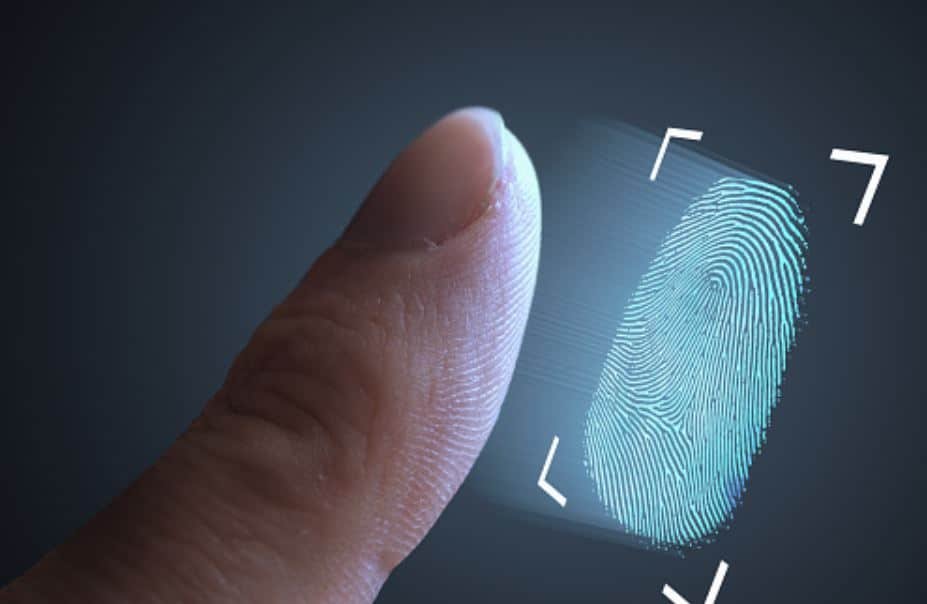News
How Long Do Fingerprints Last: Unraveling the Mystery of Their Duration

[lwptoc]
Introduction to Fingerprints
What are fingerprints?
Fingerprints are unique designs made by the ridges and valleys on the surface of our fingers. The friction ridge skin, which is important for gripping things, makes the designs. Our fingerprints are made before we are born, and they stay the same throughout our lives. This makes them a good way to identify ourselves.
The importance of fingerprints
Since the late 1800s, fingerprints have been used a lot to find out who someone is. They are often used in illegal background checks, forensic investigations, and biometric security systems. Fingerprints are useful for finding out who someone is and for solving crimes because each one is different.
Factors Influencing Fingerprint Duration
The duration of fingerprints depends on various factors, such as the surface material, environmental conditions, and handling of the object.
Surface Material
Porous Surfaces
Fingerprints on porous surfaces like paper, cardboard, or untreated wood tend to be taken in by the object. This means that the fingerprints will last longer because they will be less affected by the surroundings. But as time goes on, the pictures may become less clear, which makes them harder to read.
Non-porous Surfaces
Fingerprints are more likely to be changed by the surroundings on smooth surfaces like glass, metal, or plastic. Depending on the things we’ll talk about below, these fingerprints can last anywhere from a few hours to a few weeks.
Environmental Conditions
Temperature
Higher temperatures can make fingerprints vanish faster, which makes them last less long. On the other hand, colder temps can help fingerprints last longer.
Humidity
How long fingerprints last depends a lot on how humid the air is. When there is a lot of wetness in the air, the fingerprint residue can break down, making it last less time. Low humidity, on the other hand, can make the pictures dry out, which makes them more fragile and prone to damage.
Exposure to Sunlight
Sunlight can also affect how long fingerprints last, especially on surfaces that don’t have pores. The sun’s ultraviolet (UV) rays can break up fingerprint residue, which makes it fade more quickly.
Handling and Touching
The more an object with fingerprints is handled or touched, the higher the likelihood of the prints being smudged, distorted, or entirely removed.
Check out: How Long Does It Take to Pee After Drinking Water?
Preservation and Recovery of Fingerprints
Techniques for preserving fingerprints
Proper preservation of fingerprints is crucial for their analysis and use as evidence. Some common methods for preserving fingerprints include:
- Using protective covers, such as plastic bags or containers, to prevent additional contact with the prints.
- Avoiding direct handling of the object with bare hands, using gloves or other tools to minimize the risk of contamination.
- Storing the object in a controlled environment, such as a dry and cool place, to minimize exposure to environmental factors that can degrade the fingerprints.
Techniques for recovering fingerprints
Several techniques can be employed to recover and analyze fingerprints, depending on the type of surface and the condition of the prints. Some common methods include:
- Dusting with fingerprint powder: This technique involves applying a fine powder to the surface, which adheres to the fingerprint residue, making it visible.
- Fuming with cyanoacrylate (super glue): The fumes from heated cyanoacrylate react with the fingerprint residue, forming a white polymer that makes the prints visible.
- Using chemical reagents: Some chemical reagents, like ninhydrin or silver nitrate, can react with the fingerprint residue and produce a color change, making the prints visible.
- Alternative light sources: Ultraviolet or infrared light can make certain fingerprint residues more visible, depending on the surface and the age of the prints.
Conclusion
How long fingerprints last varies on many things, like the surface material, the environment, and how the object is handled. Fingerprints on porous surfaces tend to last longer, while fingerprints on non-porous surfaces are more likely to fade over time. For analyzing fingerprints and using them as proof in different situations, you need to know how to keep them safe and get them back.
FAQs
Do fingerprints ever change?
Fingerprints remain relatively unchanged throughout a person’s life. However, significant scarring or damage to the friction ridge skin can alter the fingerprint patterns.
Can fingerprints be removed permanently?
While it is difficult to remove fingerprints permanently, certain factors like handling, touching, or exposure to environmental conditions can degrade or remove them from surfaces.
Are all fingerprints unique?
Yes, fingerprints are unique to each individual. Even identical twins, who share the same genetic makeup, have different fingerprints.
Why are fingerprints used for identification?
Fingerprints are used to identify people because they are unique to each person and stay the same for most of their lives. Because of this, they are a trustworthy way to find out who someone is and to solve crimes.
Can fingerprints be recovered from any surface?
It is possible to get fingerprints back from different surfaces, but the success rate relies on things like the surface material, the environment, and the techniques used to keep and get the fingerprints back.
Read about: What Is The Meaning Of Cold Hands And Feet?
-

 Tech2 months ago
Tech2 months agoBest AI Tools for Image Generation in 2025
-

 Real Estate2 months ago
Real Estate2 months ago6 Amenities Every Community with 55+ Active Adult Homes in Nashville Should Have
-

 Food2 months ago
Food2 months agoHard Salami: History, Taste, and How It’s Made
-

 Home Improvement2 months ago
Home Improvement2 months agoThe Benefits of Adding a Bench to Your Living Room






